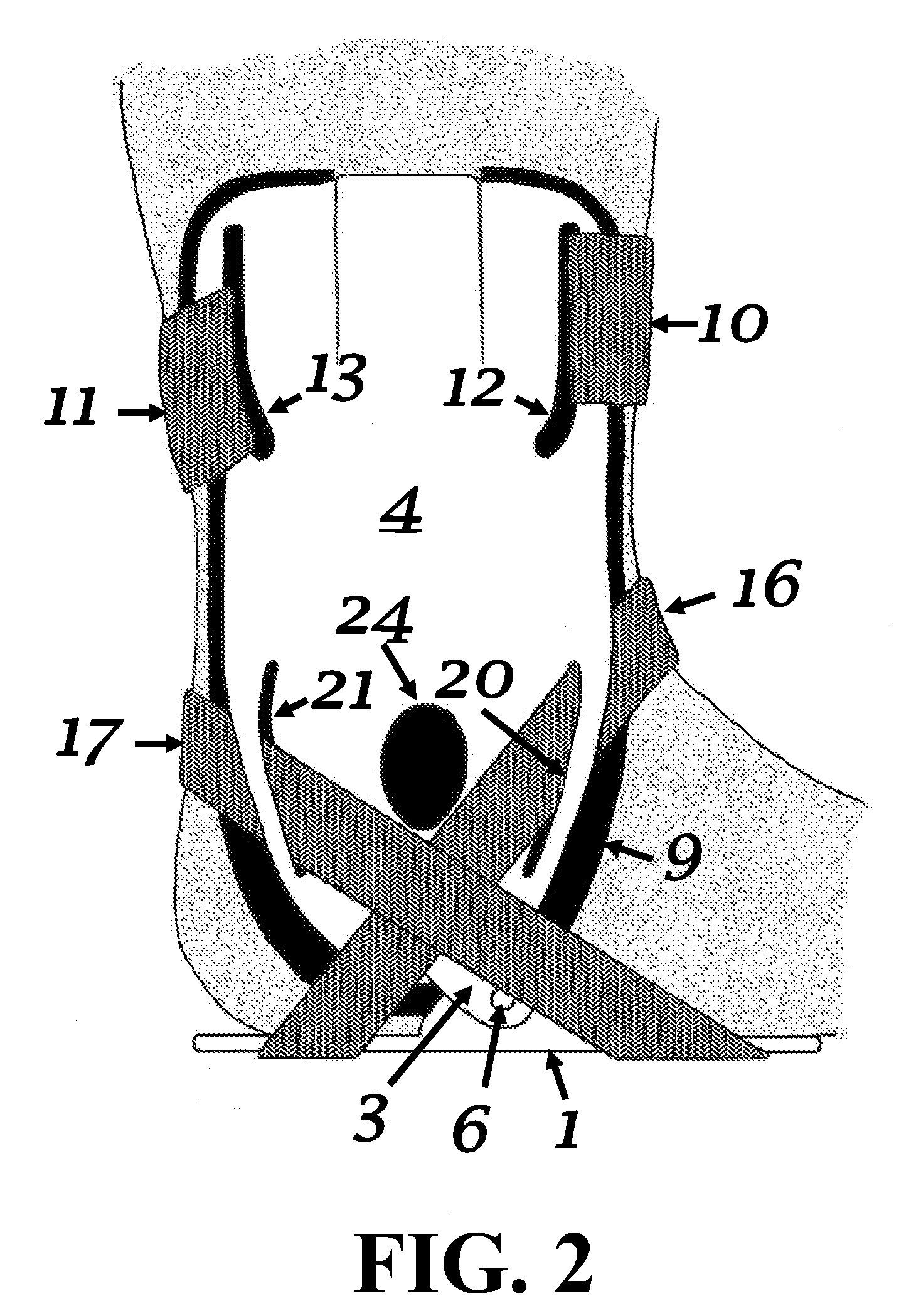Ankle Brace Design for Optimal Fit to Either Right or Left Extremity Contours
a technology for right or left extremities, applied in the field of ankle brace design, can solve the problems that the design that can be applied to either a right extremity or a left extremity has not provided an optimal alignment between the contours of its semi-rigid components and those of the medial and lateral surfaces, and achieves the effects of enhancing the conformity of the ankle brace, enhancing the mechanical advantage, and effectively increasing the length of the footpla
- Summary
- Abstract
- Description
- Claims
- Application Information
AI Technical Summary
Benefits of technology
Problems solved by technology
Method used
Image
Examples
Embodiment Construction
[0019]The invention incorporates a semi-rigid foot component 1 that consists of a flat footplate beneath the foot and perpendicular upright portions on its medial and lateral sides. The foot component 1 articulates with a semi-rigid medial leg panel 2 and a double-pivoting connector bridge 3 that joins the foot component 1 with a semi-rigid lateral leg panel 4. Thus, there is a single pivot point created on the medial side by rivet 5 and two pivot points created by rivet 6 and rivet 7 on the lateral side. A cushioning pad 8, which has the same general shape as that of the medial panel, is affixed to the undersurface of the medial panel. A removable U-shaped pad 9 is affixed to the undersurface of the lateral panel, which provides optimal compression of the soft tissues on the periphery of the fibular malleolus when the brace is used as a therapeutic orthosis. Alternatively, a cushioning pad that has the same general shape as that of the lateral panel may be used when control of ankl...
PUM
 Login to View More
Login to View More Abstract
Description
Claims
Application Information
 Login to View More
Login to View More - R&D
- Intellectual Property
- Life Sciences
- Materials
- Tech Scout
- Unparalleled Data Quality
- Higher Quality Content
- 60% Fewer Hallucinations
Browse by: Latest US Patents, China's latest patents, Technical Efficacy Thesaurus, Application Domain, Technology Topic, Popular Technical Reports.
© 2025 PatSnap. All rights reserved.Legal|Privacy policy|Modern Slavery Act Transparency Statement|Sitemap|About US| Contact US: help@patsnap.com



